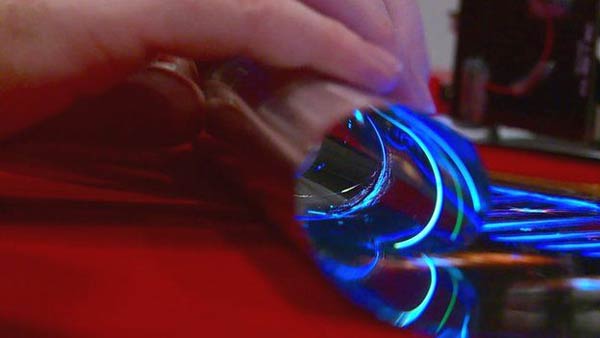
Seoul, South Korea (BBN)-If you're in the business of making TV cabinets - look away now.
For the rest of you, feast your eyes on a remarkable innovation-in-progress, reports BBC.
LG Display has been working on its fully flexible screen for some time now, but it's at this year's CES the BBC was given the exclusive first hands-on.
The screen can be rolled up and scrunched around, and the display is full HD.
The one I played with was 18in (45.7cm) corner to corner, but the team at LG say they're aiming for screens that are 55in and beyond.
At that size they will be able to produce a screen quality of 4K, they say - that's four times HD.
Right now, the resolution is 1,200 by 810 pixels.
How did they do it? Of course they wouldn't share the precise details, but the crucial technological leap has been moving from LED TVs to OLED TVs.
The O stands for organic, and it removes the necessity of a back panel providing light to the screen. Therefore, it bends.
Why would you want a bendable TV? LG says it's ideal for making displays, like in a shop, but also for people who no longer want to sacrifice an entire corner of a room to a television.
With a bendable screen like this, you can roll it up and pop it in a cupboard until you need it again.
DEAD PIXELS
Unfortunately - and you knew this bit was coming - LG isn't able to say how much it would eventually cost, or indeed, when it will actually be sold at all. At the moment, the team is buried in the prototype stage.
"The larger prototype is expected in the near future. But as for a commercial product, we're still planning the timing," says KJ Kim, LG Display's vice president of its marketing division.
That can be translated as it'll be a while yet.
Because while the screen is remarkable, it suffers a few flaws.
The night-time demo we saw, with quick flashing lights, was designed to conceal the numerous "dead" pixels in the display.
Dead pixels are those that have been damaged, so instead of emitting the correct colour just get appear as a tiny empty square.
There were several dead pixels on the screen and, after I played around with it a bit more, several more emerged.
Right now, the screen can only be rolled up in one direction, which isn't a limitation, really, but something they will need to suss out before it comes to market.
Also, it's crucial to point out that the screen can be rolled, but not folded flat.
Folding it flat would permanently damage it, and therefore the screen doesn't represent a chance for something many have lusted over for a while, an interactive video newspaper that feels just like the paper product.
BBN/SK/AD